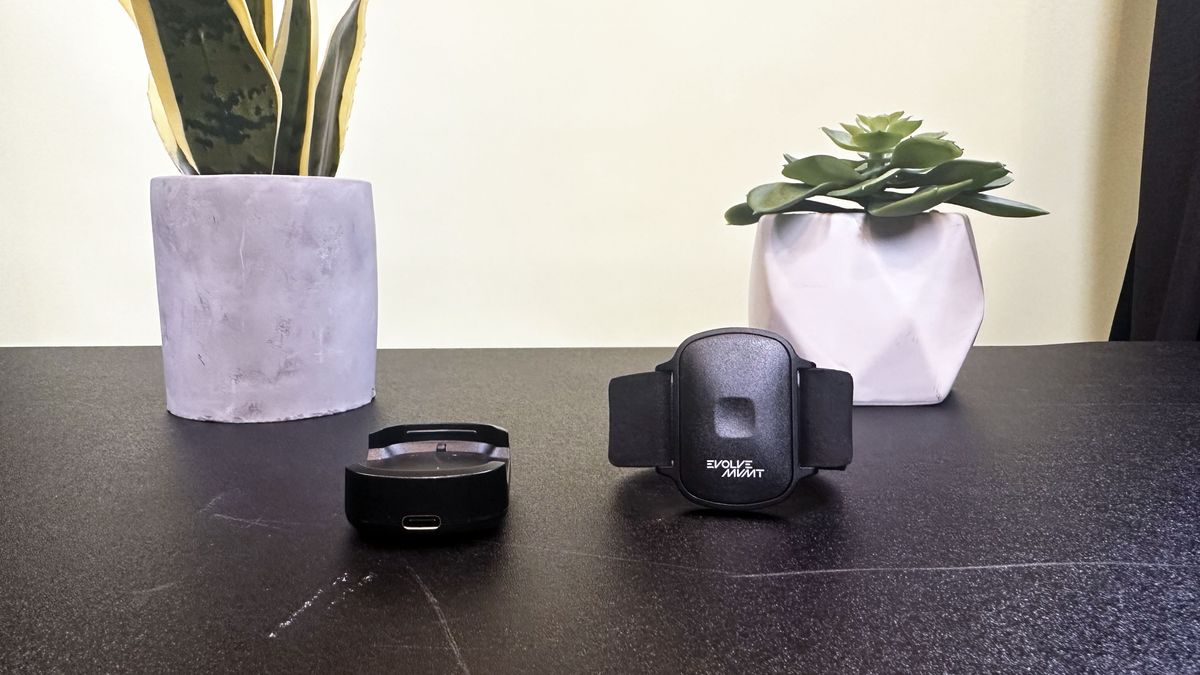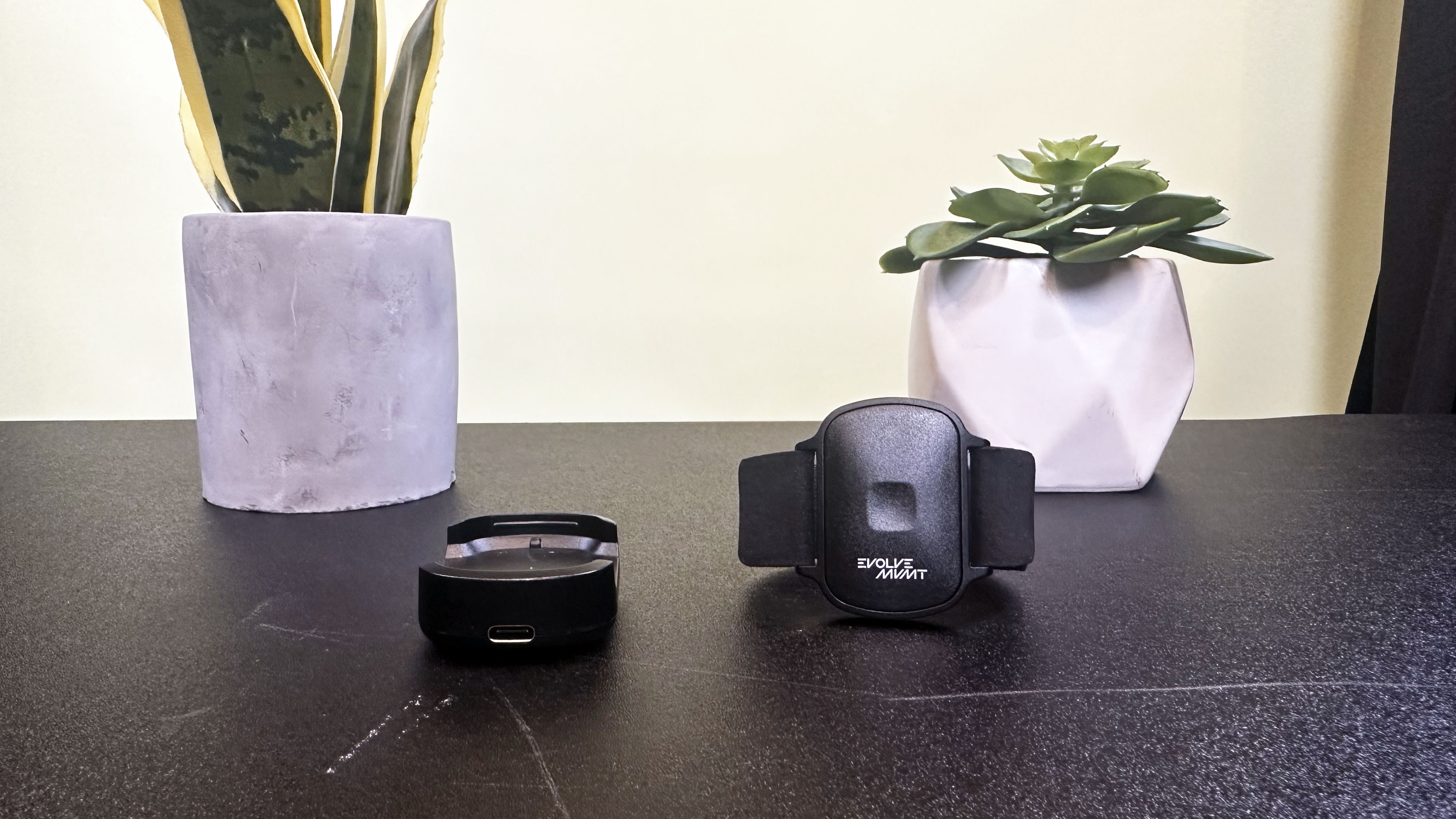

No matter how fancy your fitness watch is, the step counter will always be off because it’s tied to your wrist and not your legs. Evolve MVMT aims to change that by measuring the quality and quantity of your steps with a tracker strapped to your ankles. Working with a smartphone app, the Evolve MVMT will track your step quality and give you feedback through vibrations on the sensor and a graph of your step quality as you walk. At the end of a walk, you get a summary of your walk, including the number of steps, the time spent walking, and your step thresholds. You can save walk reports to better compare against future walks and record what shoes you used to determine which pair are your best walking shoes.Evolve MVMT is a more accurate measure of your step quantity and quality. Its main drawbacks are a steep entry price, low battery life, and the need for a constant app connection. So don’t throw away that FitBit just yet.Evolve MVMT: Pricing and configurationsEvolve MVMT is available for $499 for a single ankle sensor, elastic strap, and charge base. However, a sensor on each ankle will give more accurate readings, and that will cost $998.There are no configuration options, and the tracker is available from Evolve directly. Evolve MVMT: Setup(Image credit: Future)When taking the Evolve MVMT sensor out of the box, you’ll need to attach the elastic ankle strap to it. The sensor ships inside the charging dock, so you’ll want to remove the sensor from the dock before attaching the elastic. The strap slides through the loops on either side of the Evolve MVMT sensor and Velcros on the outside to provide a secure, snug fit.Once charged and set up, you must connect the sensor to the Evolve MVMT app, which can be downloaded for Android or iOS. You’ll need to create an account, though it’s simple to do in the app. Then, you’ll connect your sensor or sensors and learn about Evolve’s “light walking” technique.Once you connect the sensor to the app, you’ll be asked to perform a baseline walk using your natural walking style. You’ll perform the walk on a 30-foot hard surface walkway, with concrete or asphalt preferred, in your bare feet. You’ll repeat this weekly baseline walk to help track your long-term progress. Once you have performed a baseline walk for each leg, you’ll be guided into performing a ‘light walk’ baseline using the techniques outlined in the app.From there, your sensor is set up, calibrated to your walking characteristics, and ready to go.Evolve MVMT: Design(Image credit: Future)The sensor design is rather basic, with a black matte plastic casing and a black elastic strap. The rounded rectangle design is far from fashionable and brings to mind an ankle monitor. But as a fitness tracker, I don’t mind it being an understated basic design. It blends into my black leggings well and is slim and light enough to not interfere with my walk.The charging dock is molded to fit the Evolve MVMT sensor perfectly, so I didn’t initially realize it was a charging dock. However, while attaching the strap to the sensor, I realized the dock was a separate piece of equipment. Having a separate docking station makes sense to keep the sensors as thin and lightweight as they are, as it keeps the USB-C charging circuits in the dock and uses two contact pins to connect the charging base to the sensor.The elastic ankle strap is designed to fit snugly, and I had no trouble fitting it to my ankles. However, only one size of ankle strap is available, and there are no plans to add additional strap lengths in the near future, a company rep told me. This will make it difficult for folks on the thicker side to get the sensor placed correctly. My ankles are about 8 inches around, and while I could get the Evolve MVMT strap around my favorite pair of boots, folks with ankles that are 11 inches or more may need to find a different ankle band to use the Evolve MVMT sensor.Evolve MVMT: Fitness tracking(Image credit: Future)Evolve MVMT’s light walking technique optimizes muscle activation to help burn more energy, protect joints, and correct bad posture. It takes quite some adjustment to get the walking technique down, and it can be challenging to do on certain terrain and with certain shoes. So, it is best to use the Evolve MVMT when walking on asphalt or cement and with a good pair of running or walking shoes.The Evolve MVMT app grades your step quality on a scale of 1-10, with most people averaging a 4-7 on their initial barefoot baseline walks. When walking with shoes on uneven surfaces, the baseline drops sharply. This was especially noticeable when walking on the uneven, cracked sidewalks of Hoboken, NJ, and New York City, where I did the majority of my personal testing.The MVMT sensor will provide active feedback by vibrating when you make poor steps and will remain quiet when your step quality is good. After recording your walk, the app also offers real-time feedback and a walk summary. The main trouble with the app is that it does not run in the background on your smartphone. So, you need to leave the Evolve MVMT app on your smartphone’s main screen while walking, making it difficult to run other apps. Even answering a phone call or receiving a text message will pause the tracking system, making it frustrating to get quality data while on long city walks.I eventually resorted to putting my phone on “do not disturb” to get accurate data. Still, the app sometimes interfered with my Spotify playlist, leaving me to complete some quiet walks around the neighborhood.Evolve MVMT: Battery life and chargingMy biggest concern with the Evolve MVMT tracker is its short battery life. I decided to wear it to the Laptop Mag office to see if my steps deteriorated after a long day of running around the Laptop Mag newsroom. I was disappointed to realize it could only last about half my working day while passively providing step-quality feedback by vibration.Of course, if you only plan to use the Evolve MVMT while on dedicated walks or while exercising, it should have enough battery to last a few hours of dedicated tracking. However, it won’t stand up to a full day of hiking.The USB-C charging base makes it quick and easy to charge. After only an hour or two of charging, the sensor will be ready for another round of tracking.Bottom line(Image credit: Future)While Evolve MVMT is a great tool for more accurately measuring your steps during an outdoor walk and can be fantastic for those recovering from injuries or trying to prevent further joint damage, it does have a few significant drawbacks. The ankle strap is designed to be snug, but it comes in only one size, making it difficult for some to use. The sensor has a limited battery life, so it won’t be able to track all of your steps all day, and the companion app will not track your step quality in the background, so you may have difficulty listening to your favorite music while walking. It’s a great addition to your current fitness tracking routine, but the Evolve MVMT won’t replace the more traditional watch trackers soon. If its developers can work out the app issues and extend the battery life, the Evolve MVMT will be an incredibly useful fitness tool that could replace some of the more bare-bones fitness watches. For now, it doesn’t have the lifespan or passive monitoring capabilities needed to make it a real contender for replacing the best fitness trackers and smartwatches.






